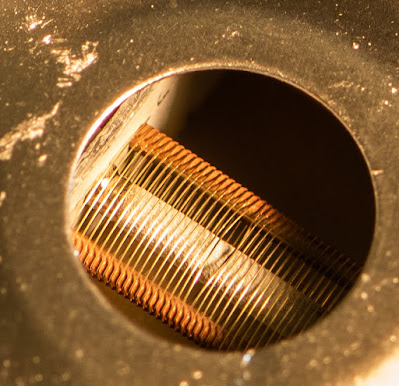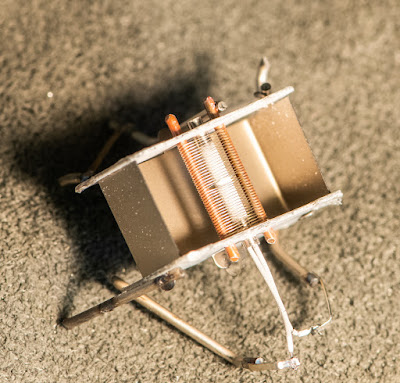Hi!
Let's have some fun this month and have a look at a tube which is not usable for audio applications yet very interesting. Please meet the 6EN4.
The 6EN4 is a beam triode designed for shunt regulation of the high voltage power supply in color TV sets. The Cathode ray tube (CRT) of such TV sets needs a very high voltage to accelerate the electron beam towards the front. This voltage is usually in the range of 20kV and more.
The 6EN4 was designed for direct shunt regulation of that voltage. It has an Octal base and a small top cap. The pinout can be seen on the left. The 6EN4 has some impressive specs. A maximum plate voltage of 30.000 Volts! Maximum plate dissipation 40W. The amplification factor is huge with a value of 2000. Not a measly 100 like your garden variety 12AX7 or other so called high mu triodes. 2000! But before you start to look where to buy this tube to build a single stage phono preamplifier, the transconductance is a measly 200 micromhos which means a plate resistance in the range of 10 MegOhms. So not only does the tube need a couple of thousand volts on the plate before it wakes up, with such a high plate resistance it will not be able to drive anything meaningful. It is meant to be connected directly between the high voltage to be regulated and a reference voltage. The grid would be driven from a very high resistance adjustable voltage divider between high voltage and ground. Thus any changes in the high voltage would result in a change of the shunt current through the 6EN4. The raw high voltage supply of such TV sets would have a very high internal resistance of more than 10 Megohms. So any change in current through the 6EN4 would result in the desired stabilisation of the high voltage. Obviously only a very small current would flow through the 6EN4. But 1mA at 30kV translates to 30W dissipation! Since it only carries a small plate current a rather small cathode is needed which has a heater that only consumes 0.2A. See the General Electric data sheet for all specs.As can be expected from the specs, such a tube has a rather unusual construction.
At the bottom we see the beam forming shield which is internally directly connected to the cathode. The plate has a large cylindrical shape which is not around grid and cathode.
Grid and cathode are mounted horizontally inside the beam forming shield which has a opening on the top to direct the electrons towards the plate.
A close up to grid and cathode:
Very small distance between the grid wires and the cathode and large distance to the plate.
Extremely rugged construction.
The top cap is very solidly tied into the glass without any risk of coming loose as is often the case with other tubes with top caps.
A warning about potential X-rays produced in such tubes directly printed onto the base.
Let's have a look inside this engineering marvel.
The bottom part with cathode and grid inside the beam shield.
The grid got damaged when I broke the glass bulb.
Removing cathode and grid from the shield:
The tiny heater:
Plate:
Close up to grid and cathode:
What a beast of a tube! I hope you enjoyed it.
Best regards
Thomas































No comments:
Post a Comment